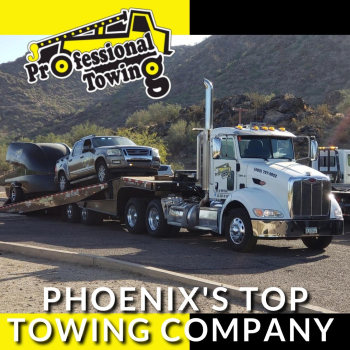Latest News From Bumper to Bumper Radio

Most vehicles start out with a “new car smell,” but there are other specific odors that motorists should never ignore. Identifying these suspect smells early on can help car owners be car care aware and avoid the hassle and expense of an unexpected breakdown, says the Car Care Council.
“Unusual smells can be the sign of serious, and potentially costly, trouble for your vehicle. By acting quickly and making necessary repairs, you’ll be able to breathe easy knowing there is no harmful damage to your car,” said Rich White, executive director, Car Care Council.
The Car Care Council recommends a sniff test of your vehicle to identify any unusual smells, including the following six warning signs:
1. The smell of burnt rubber could be slipping drive belts or misplaced loose hoses that might be rubbing against rotating accessory drive pulleys. Do not reach in if the engine compartment is hot.
2. The smell of hot oil could mean that oil is leaking onto the exhaust system. To verify the leak, look for oil on the pavement or smoke coming from the engine area.
3. The smell of gasoline is likely the sign of a gas leak in some area of the vehicle such as a fuel injector line or the fuel tank. Any smell of fuel can result in a possible fire hazard, so immediate attention should be given.

Pump prices continue to increase across the country with nearly every state’s average pushing more expensive on the week, on average by four cents. At the start of the Memorial Day work week, the national gas price average is $1.87.
The last time the national gas price average leading into the holiday was under $2/gallon was 17 years ago in 2003. That year motorists paid, on average, $1.50 to fill-up. Gas prices this year won’t be as cheap as 2003, but today’s national average is a dollar cheaper than one year ago.
“Gas prices around Memorial Day have not been this cheap in nearly 20 years. However, as the country continues to practice social distancing, this year’s unofficial kick-off to summer is not going to drive the typical millions of Americans to travel,” said Jeanette Casselano, AAA spokesperson. “Despite inexpensive gas prices, AAA anticipates this year’s holiday will likely set a record low for travel volume.”
For the first time in 20 years, AAA will not issue a Memorial Day travel forecast due to COVID-19 impacts on the underlying economic data used to create the forecast.
Americans can expect gas prices to continue to push more expensive, possibly hitting $2/gallon in the next few weeks. This is mostly due to demand increasing as states re-open. This week will also bring the Environmental Protection Agency’s waiver on the sale of winter-blend gasoline to an end. Stations will switch over to summer-blend gasoline, which has a lower Reid Vapor Pressure to prevent excessive evaporation when outside temperatures rise. Reducing the volatility of summer gas decreases emissions that contribute to unhealthy ozone and smog levels. Typically, the switchover to summer-blend can cause gas prices to spike during the summer driving season, but that will likely not be the case this year due to the impact of COVID-19 on demand and crude oil prices.
Quick Stats
The nation’s top 10 largest weekly increases are: Idaho (+17 cents), Pennsylvania (+8 cents), Wisconsin (+7 cents), Iowa (+7 cents), Colorado (+7 cents), Kansas (+7 cents), Maryland (+6 cents), Utah (+6 cents), Nebraska (+5 cents) and Minnesota (+5 cents).
The nation’s top 10 least expensive markets are: Mississippi ($1.51), Arkansas ($1.52), Oklahoma ($1.52), Missouri ($1.54), Texas ($1.56), Alabama ($1.57), Kansas ($1.57), South Carolina ($1.60), Louisiana ($1.60) and Tennessee ($1.62).
West Coast
Pump prices in the West Coast region are among the most expensive in the country, with more increases expected as states in the region ease restrictions this week. When compared to a week ago, California (+4 cents) and Nevada (+4 cents) saw the largest increases in the region. Arizona (-1 cent) saw the only decline. Hawaii ($3.17) and California ($2.80) remain the most expensive markets in the country. Washington ($2.45), Oregon ($2.38), Nevada ($2.35), Arizona ($2.07) and Alaska ($2.05) follow.
According to EIA’s latest weekly report, total gas stocks in the region decreased from 31.2 million bbl to 30.8 million bbl last week. As more motorists take to the roads in the region this week, gas demand is expected to continue to grow. Higher gas demand, amid falling gas stocks, will likely lead pump prices to increase this week.

According to the annual CarMD® Vehicle Health Index™ one of the most common check engine light repairs is replacing the oxygen sensor. This relatively minor repair can be costly if neglected, leading to as much as 40 percent lower fuel efficiency, causing further damage to your vehicle’s exhaust system and adversely impacting the environment.
“Vehicles with faulty oxygen sensors typically seem to drive and handle well, but the malfunction can dramatically decrease fuel efficiency and lead to costlier repairs if ignored,” said Rich White, executive director, Car Care Council. “A faulty oxygen sensor means your vehicle is emitting more pollutants and if the check engine light is illuminated, it may not pass vehicle emissions testing in those states requiring it for vehicle registration.”
A vehicle’s oxygen sensors are mounted in the exhaust system; they monitor the catalytic convertor’s operation and the level of oxygen in exhaust gases to maintain efficient engine operation. The best way to prevent an oxygen sensor failure is to follow a regular service schedule, including routine oil changes.
Unlike the past nine years of the annual CarMD report, costly catalytic converter replacement edged out O2 sensor replacement as the most common check engine light repair. Catalytic converters do not typically fail unless maintenance and other repairs are ignored or the vehicle is older. Average vehicle age has increased from 10.6 years to 11.7 years over the past decade, contributing to this outcome.

State gas price averages increased for less than a dozen states in the last week, but they were large enough jumps to push an increase to the national average. At $1.78, today’s average is a penny more expensive than last week, 16 cents less than a month ago and $1.11 cheaper than last year at this time.
“As some states begin to re-open businesses, those states will likely see demand increase and pump prices will likely follow suit,” said Jeanette Casselano, AAA spokesperson. “Although U.S. gasoline demand has incrementally increased, it remains below 6 million b/d.”
On the week, the Great Lakes and Central region saw double-digit increases in a few states, but the bulk of the country saw decreases of a nickel or less. Pump price fluctuation will continue across the country in coming weeks, especially as more states re-open and motorists begin driving more.
Quick Stats
The nation’s top 10 largest weekly changes are: Wisconsin (+27 cents), Ohio (+19 cents), Indiana (+16 cents), Michigan (+13 cents), Iowa (+7 cents), Illinois (+6 cents), Kentucky (+6 cents), Utah (-6 cents), Montana (-6 cents) and Wyoming (-5 cents).
The nation’s top 10 least expensive markets are: Oklahoma ($1.37), Arkansas ($1.39), Missouri ($1.44), Kansas ($1.46), Wisconsin ($1.46), Mississippi ($1.48), Kentucky ($1.49), Texas ($1.49), Michigan ($1.53) and Tennessee ($1.54).
West Coast
As some regions are seeing prices increase, all states in the West Coast region continue to see pump prices decline, albeit slower than a month ago. On the week, Oregon (-4 cents) and Arizona (-4 cents) saw the largest declines in the region. Hawaii ($3.15) and California ($2.74) remain the most expensive markets in the country. Washington ($2.44), Oregon ($2.38), Nevada ($2.31), Arizona ($2.10) and Alaska ($2.00) follow.
According to EIA’s latest weekly report, total gas stocks in the region decreased from 34.7 million bbl to 32.7 million bbl last week. Refinery utilization also dropped in the region to 59 percent, which contributed to the decline in gas stocks and is the lowest rate in the region since 2010, according to EIA’s data. Although stocks have decreased, low gas demand in the region is expected to bring continued lower pump prices.

Expertise looked at 345 Auto Body Shops serving Phoenix and Picked the Top 17.
Their goal was to connect people with the best local experts. Auto Body Shops were scored on more than 25 variables across five categories, and analyzed the results to give you a hand-picked list of the best Auto Body Shops in Phoenix, AZ. Bumper to Bumper shops Campus Body Salon and I-17 Collision were bother honored to be included.
Selection Criteria:
1. Reputation
A history of delighted customers and outstanding service.
2. Credibility
Building customer confidence with licensing, accreditations, and awards.
3. Experience
Masters of their craft, based on years of practical experience and education.
4. Availability
Consistently approachable and responsive, so customers never feel ignored.
5. Professionalism
Providing service with honesty, reliability, and respect.





















